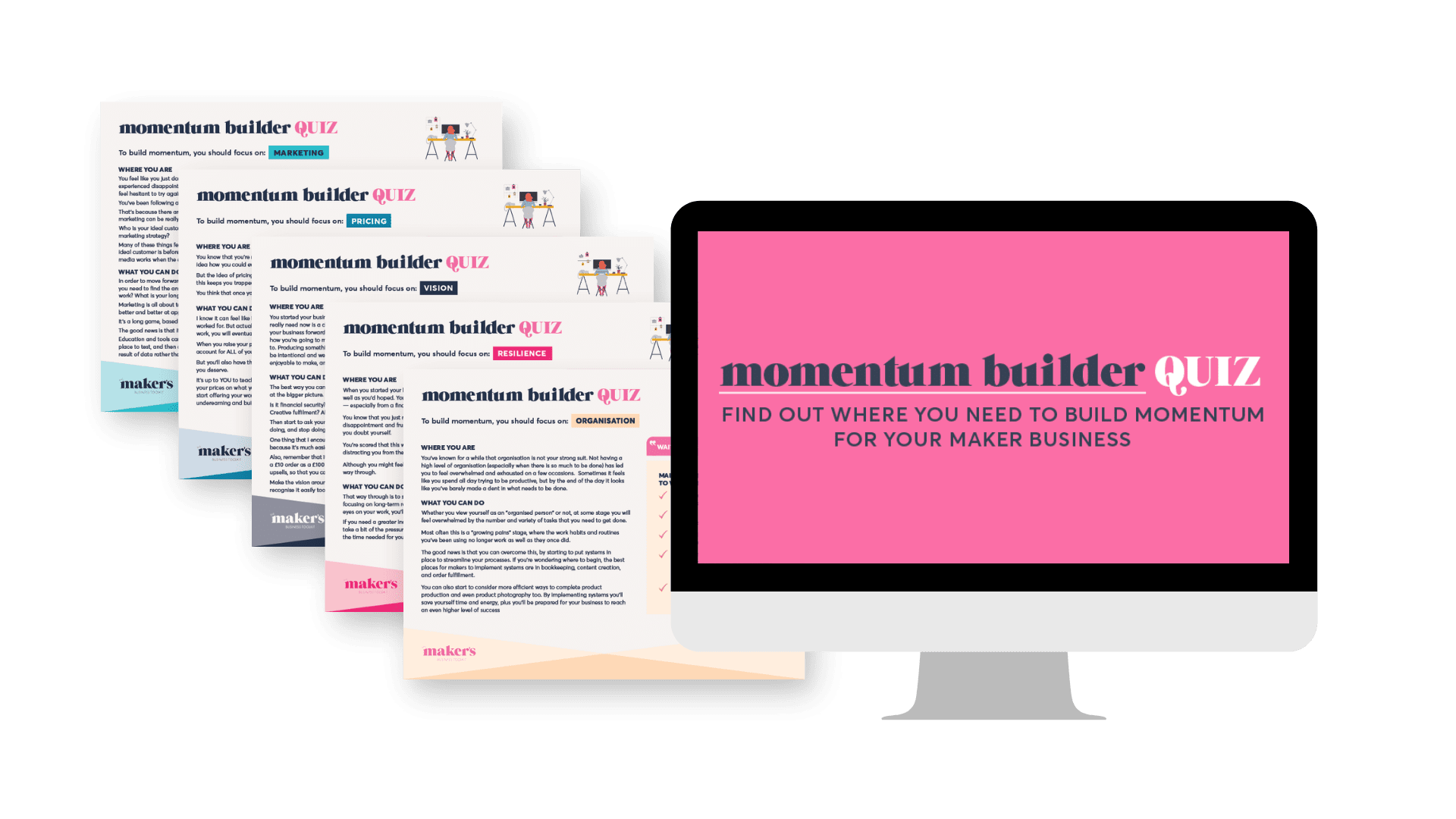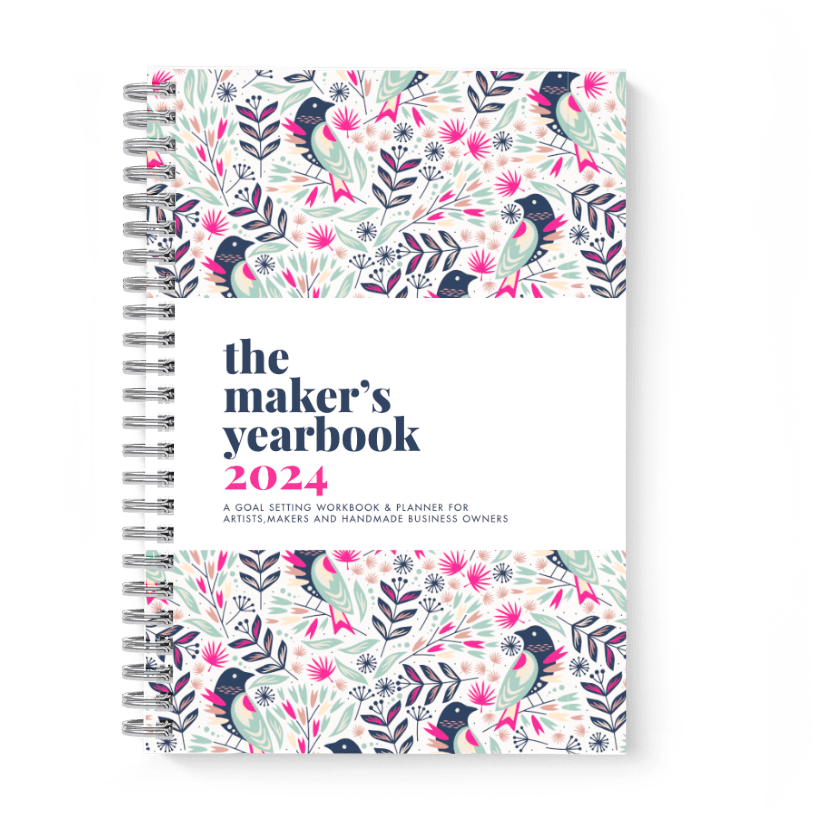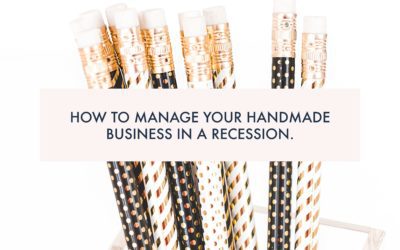Start a conversation about Sale or Return (or Consignment as it is know elsewhere in the world) amongst a group of makers and you’re likely to get some pretty strongly worded responses.
Sale or Return definitely gets a bad rap and there’s no question that it’s not the best business model for makers who want to sell their work through shops & galleries, but does that mean you should never consider it?
I don’t think so.
I think that sale or return can work well as part of your overall sales strategy but there are some things you should consider to avoid getting burned.
First, let’s talk about what Sale or Return is. And what it isn’t.
Sale or Return is a type of agency agreement where a shop or gallery agrees to sell and market your work for you in exchange for a commission on the value of the goods they sell.
The goods still belong to you, until they are sold to the end customer.
As such, you set the prices at which the goods should be sold and the agent (the shop or gallery) shouldn’t mark them down or offer discounts unless this has been agreed with you.
The rate of commission is negotiable (usually initially proposed by the retailer) and should be agreed upfront.
As the agent is promoting your work, they should be given credit for all sales they bring to you, regardless of where the customer makes their purchase.
So, if someone sees your work at their gallery and then shops on your website, you should still give the commission to the gallery although this can be hard to monitor.
This makes sure that the shop or gallery is incentivized to promote your whole range, rather than just what they happen to have in store.
The store or gallery should make payments to the maker once a month, with paperwork that shows what they have sold, the amount of commission they have withheld and the net payment made.
This is how Sale or Return should work and when done in this way it can be a great relationship between the maker and the retailer.
Unfortunately this is not always how it plays out in practice.
What often happens is that retailers don’t take care of makers’ work and don’t pay them on time.
And makers often undercut their retailers and treat them like a form of free advertising.
All in all, it makes for a fractious and mistrustful relationship, which is a shame because it doesn’t need to be this way.
Perhaps the issue is that we don’t always go into a Sale or Return arrangement with our eyes open, but instead we feel like we have no choice and that we won’t get our work into shops and galleries unless we accept an arrangement that isn’t particularly favourable.
Let’s look at some of the positives and negatives of selling on Sale or Return so we can make well-informed decisions from a position of strength, instead of feeling resentful and missing out on the opportunity to build relationships and get our work in front of people.
The Upsides of Sale or Return
1️⃣ Retailers don’t face the risk that your products won’t sell well in their shops and so they’re often more likely to give your work a try. This is especially useful when your work is untested or in times of economic weakness when retailers are likely to be much more conservative with their wholesale purchasing decisions.
2️⃣ You receive monthly payments from your Sale or Return retailers which can help to provide a steady flow of cashflow for your business. Wholesale orders can come in big chunks at certain times of the year and that can make it difficult to manage your expenses. Adding a few Sale or Return stockists can mean that you have some money coming in between those wholesale orders.
3️⃣ Because you receive payments monthly, you also receive monthly feedback on what is selling and what isn’t. You can also build up a relationship with your retailers through these monthly exchanges, helping you to be able to ask them more questions about what is and isn’t working.
The Downsides of Sale or Return
1️⃣ It can be a significant outlay of cash upfront to provide stock to a Sale or Return retailer and, until you’ve worked with the retailer for a few months you don’t really know how long it’s going to take you to recover those costs and start to make a profit on your investment.
2️⃣ The experience with Sale or Return retailers can vary dramatically. With experience you’ll get to know from the start whether retailers are organised and fair with their makers or whether they are more chaotic but in order to get that knowledge you’ll probably have a few painful experiences.
3️⃣ Sometimes getting work for free does mean that it isn’t valued as much and doesn’t get taken care of in the same way. Sadly this is just human nature and it is not unusual to get work returned from a Sale or Return retailer that is very shopworn.
4️⃣ You’re not in control of work that still belongs to you and you might find that the retailer isn’t helpful in returning unsold work. This can be extremely frustrating. You might experience a retailer not returning your calls or emails or putting your work in a stock cupboard and forgetting about it. I had a situation where a retailer refused to weigh parcels of prints I had sent them for an exhibition so that I could book a courier. These things will happen and you’ll probably just have to suck it up.
So what do you need to consider before taking on some Sale or Return retailers?
You need to have clear terms and conditions so that you set out what you expect. When will you get paid for sold work? What is the commission level? What happens if work is damaged or stolen while in the retailer’s care? Who is responsible for postage costs?
It is important that you have your own terms and conditions rather than relying on the retailer to set the terms. You can always negotiate but it’s important to know your starting point in terms of your expectations.
2️⃣ Make sure you have set your prices so that you make a solid profit after the retailer has taken their commission. Make sure you also take into consideration any “shelf fees” or other monthly fees that you might have to pay even if the retailer doesn’t sell anything. These fees are often expressed in “per day” terms so it can be easy to underestimate them. Don’t forget that £5 a day is £150 a month and, depending on the price level of your products, that could be a considerable amount of sales before you make any money at all.
3️⃣ You need to consider how long you will leave the work with the retailer if it doesn’t sell immediately. I tend to allow six to twelve months before asking for my work back, so that the retailer has the chance to get through any seasonality. After that point, you probably have a good sense that your work isn’t going to do well in that particular shop.
4️⃣ Work out roughly how much it costs you to initially set up a Sale or Return retailer in terms of the stock you need to purchase and the delivery to and from the shop. Even if you already have the stock available it’s helpful to make this calculation so you can be clear on how much of your work the retailer has to sell before you break even. This can really help you to decide how many Sale or Return retailers you want to work with at one time and whether a particular shop can sell enough to be worth the initial outlay.
5️⃣ You should also consider whether you want to do Sale or Return indefinitely, or if you want to offer it just for a trial period and then move to wholesale. Offering SOR for 3-6 months to a new retailer can allow shops to test your work without the risk of a wholesale order and can also help you to get immediate feedback on the kinds of shops that work best for your products.
Sale or Return isn’t the best deal for makers and it definitely has something of a bad reputation but there are upsides and there are times when it can help you move your business in the right decision.
Like everything else you just need to know where to draw the line and that’s different for every business.
I firmly believe that if you make decisions based on what is best for your business and know where you can negotiate and where you have to say no, you can avoid that feeling of having no choice which can lead to resentment and lack of motivation.
I hope next time you get asked about Sale or Return, you can make that decision from a position of confidence and feel happy with your answer, whether it’s a yes or a no.








